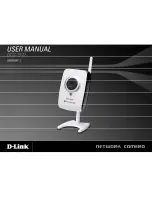
5. Gases that can cause false alarms
Methane, propane, isobutane, ethylene, ethanol, alcohol, isopropanol, benze-
ne, toluene, ethyl acetate, hydrogen, hydrogen sulphide and sulphur dioxide.
Almost all aerosols, alcohols, paints, thinners, solvents, binders, hair sprays,
aftershaves, perfumes, car exhaust (cold start) and some detergents.
When the product is exposed to the above-mentioned gases, it may give
false alarms or be permanently damaged. When the alarms are activated
and you smell an irritating gas, this may be a false alarm, as CO is colorless
and odorless.
Tip: Place the product in clean air, if it is still in alarm state 30 minutes later,
it means that the product has been polluted. You must place the unit in clean
air for 24 hours. If the product does not recover after this time, it means that
the sensor has been damaged and the product should not be used anymore.
6. Maintenance advice
The product must be kept clean when in use, otherwise its performance
will be affected and may even damage the alarm. It should be cleaned and
tested once a month as follows.
• Remove dust with a hoover.
• Wipe the surface with a soft, slightly damp, wrung-out cloth.
• Press the TEST button and ensure that the detector is working properly,
then reinstall it for use.
Note: Do not clean the alarm with chemicals such as alcohol, petrol, de-
tergents... This may damage the alarm.
7. What is carbon monoxide?
Carbon monoxide is a colorless and odorless gas that can cause death and
is generated by the combustion of any combustible material. Every year Co
kills hundreds of people and poisons many more. In high concentrations, Co
can kill within minutes. (See point 7.2).
7.1. Possible sources of carbon monoxide
Carbon monoxide can be generated by heating and combustion equipment,
EN







































